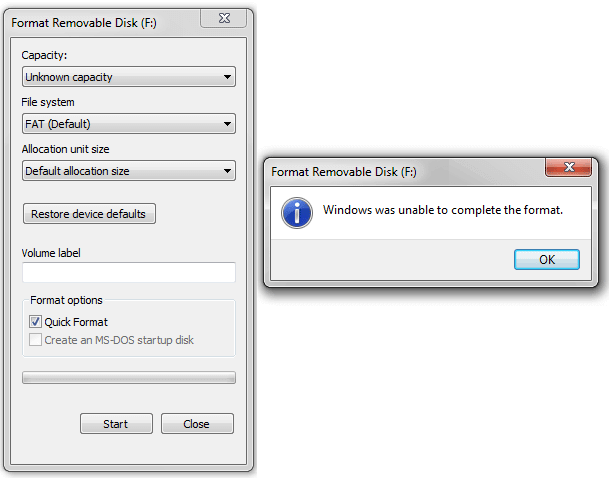
- #DISC REPAIR VOLUME COULD NOT BE UNMOUNTED HIGH SIERRA MAC OS#
- #DISC REPAIR VOLUME COULD NOT BE UNMOUNTED HIGH SIERRA INSTALL#
- #DISC REPAIR VOLUME COULD NOT BE UNMOUNTED HIGH SIERRA CODE#
- #DISC REPAIR VOLUME COULD NOT BE UNMOUNTED HIGH SIERRA PLUS#
Below is an example where gpt, with such an option, can be used instead of gdisk.įirst, set the following variable. The lastest versions of macOS contain a version of gpt that has a -f (force) option. The output of diskutil list is shown below. The output has been omitted, since it is similar to that of disk1. diskutil erasevolume jhfs+ Dave1 disk2s2ĭiskutil mergepartitions jhfs+ Dave1 disk2s2 disk2s3 The volume name Dave1 was chosen arbitrarily. $ diskutil mergepartitions jhfs+ Dave0 disk1s2 disk1s3
#DISC REPAIR VOLUME COULD NOT BE UNMOUNTED HIGH SIERRA PLUS#
Initialized /dev/rdisk1s2 as a 119 GB case-insensitive HFS Plus volume with a 16384k journal $ diskutil erasevolume jhfs+ Dave0 disk1s2 diskutil erasevolume jhfs+ Dave0 disk1s2ĭiskutil mergepartitions jhfs+ Dave0 disk1s2 disk1s3 The volume name Dave0 was chosen arbitrarily.
#DISC REPAIR VOLUME COULD NOT BE UNMOUNTED HIGH SIERRA MAC OS#
Next, the commands outlined below will covert the Linux partitions on each disk to a single Mac OS Extended (Journaled) volume. dev/disk1 (disk image):Ģ: Linux Filesystem lvgDave 127.7 GB disk1s2ģ: Linux Filesystem Boot OS X 134.2 MB disk1s3Ģ: Linux Filesystem lvgDave 999.7 GB disk2s2ģ: Linux Filesystem Boot OS X 134.2 MB disk2s3 The output has been omitted, since it is similar to that of disk1.īelow is the result from diskutil list. The operation has completed successfully.īelow are the commands to change disk2s2 and disk2s3 to Linux type partitions.

Warning: The kernel may continue to use old or deleted partitions. OK writing new GUID partition table (GPT) to /dev/disk1.
#DISC REPAIR VOLUME COULD NOT BE UNMOUNTED HIGH SIERRA CODE#
Hex code or GUID (L to show codes, Enter = AF00): 8300Ĭhanged type of partition to 'Linux filesystem'įinal checks complete. Partitions will be aligned on 8-sector boundaries Main partition table begins at sector 2 and ends at sector 33įirst usable sector is 34, last usable sector is 250000006 Warning: Devices opened with shared lock will not have theirįound valid GPT with protective MBR using GPT.ĭisk /dev/disk1: 250000040 sectors, 119.2 GiBĭisk identifier (GUID): B791964B-307B-49C4-850A-6C8410A44C1B
#DISC REPAIR VOLUME COULD NOT BE UNMOUNTED HIGH SIERRA INSTALL#
You have to download and install gdisk.īelow are the commands to change disk1s2 and disk1s3 to Linux type partitions. Note: The gdisk command is not part of macOS.

One way to accomplish this is to use the gdisk command. If you wish to destroy the Core Storage arrangement, then start by changing the partition type to Linux. dev/disk1 (disk image):Ģ: Apple_CoreStorage lvgDave 127.7 GB disk1s2Ģ: Apple_CoreStorage lvgDave 999.7 GB disk2s2 Be aware that a small error can delete the wrong disk, that there is no going back from it, that it takes a long time (though usually you can stop it with ctrl-c after the first percentage above 0 appears), and that it may destroy a disk (lots of zeros will be written).īelow is the output from diskutil list of an the arrangement to be used in this example. Use it only when deleting is unsuccessful.

You use it on both disks and let Disk Utility repair the Fusion Drive again. But it also only works when unmounting worked. On a sidenote, the zeroDisk option in Diskutil cleans up your disk more radically (and wears down the SSD more), but may help when issues remain. Try to exclude the disk from spotlight, time machine and so on.Īfter that, there are a few unmount options in the terminal - sometimes, you have to unmount the volumes before you unmount the disks, or vice versa, and such.Īlso, a few times in my past, the disk utility from the gui could unmount something which the diskutil command could not.Īs a final recourse, try all this with the online recovery (it tends to be less likely to mount something) and/or the original version of MacOS your Mac shipped with (it may not understand new features of your Fusion Drive's file system, which is an advantage when deleting it). Something may be mounting the disk on your startup system.


 0 kommentar(er)
0 kommentar(er)
